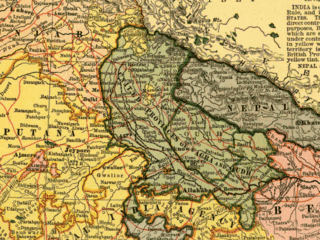Loading AI tools
District of Haryana in India From Wikipedia, the free encyclopedia
Palwal district was created on 15 August 2008. It is the 21st district of Haryana state in Delhi NCR region of northern India. Palwal City is the headquarters of the district. It is part of the Braj region.
This article needs additional citations for verification. (October 2018) |
Palwal district | |
|---|---|
 Dabchick Tourist Complex in Hodal | |
 Location in Haryana | |
| Country | |
| State | Haryana |
| Division | Faridabad |
| Headquarters | Palwal |
| Tehsils | Palwal, Hodal, Hathin |
| Area | |
| • Total | 1,359 km2 (525 sq mi) |
| Population (2011) | |
| • Total | 1,042,708 |
| • Density | 770/km2 (2,000/sq mi) |
| • Urban | 236,544 |
| Demographics | |
| • Literacy | 70.32% |
| • Sex ratio | 879 |
| Time zone | UTC+05:30 (IST) |
| Vehicle registration | HR 30 (PALWAL)
HR 73 (RTA PALWAL) HR 52 (HATHIN) HR 50 (HODAL) |
| Major highways |
|
| Average annual precipitation | 60–100 mm |
| Lok Sabha constituencies | Faridabad (shared with Faridabad district) |
| Vidhan Sabha constituencies | 4 |
| Website | palwal |
The city is situated 60 km (37 mi) from Delhi, 29 km (18 mi) from Faridabad and 50 km (31 mi) from Gurugram on the Delhi-Agra national highway. The area of the city is 40 km2 (15 sq mi).[1]
According to legend, the city of Palwal is named for the demon Palwalasur who was said to have ruled during the reign of Pandavas.[citation needed]

Palwal is supposed to figure in the earliest Aryan traditions under the name of Apelava, part of the Pandava kingdom of Indraprastha, which was later restored by Vikramaditya.[2]
During the reign of Mughal empire, the freedom fighter Kanha Rawat carried forward the legacy of Jat leader Gokula to fight against Aurangazeb. After Kanha refused to convert his religion to Islam, Aurangzeb had him buried alive at Rawatpara.[3][a] A statue of Kanha was unveiled inside the park in February 2014 by Vishvendra Singh - the scion of Bharatpur State.[5][6] Kanha Rawat Memorial Park was constructed around his samadhi at his native Bahin village in Hathin tehsil.
During the British Raj, Palwal was a part of the Punjab Province and Gurgaon district.[7]
Mahatma Gandhi was first arrested at Palwal railway station. The historical building "Gandhi Ashrama" was erected in memory of the incident.[8]
On 15 August 1979, Gurgaon district was divided, with Palwal becoming part of the new Faridabad district.[9] Later, Palwal became the 21st district of Haryana on 15 August 2008.
Palwal district comprises 282 villages, 237 gram panchayats, one municipal council, two municipal committees, three sub-divisions, four development blocks and three tehsils. The sub-divisions are under the control of sub-divisional magistrate while each development block is under the control of a block development and panchayat officer. All the blocks are covered under Swarn Jayanti Gram Swarozgar Yojna and other developmental programmes. Developmental programmes are overseen by the additional deputy commissioner-cum chief executive officer, DRDA Palwal. The district is under the overall charge of the deputy commissioner who is also the chairman of the District Rural Development Agency.
Palwal is located at 28.15°N 77.33°E,[10] between the eastern bank of Yamuna river and the western flank of Aravalli mountain range. It has an average elevation of 195 metres (639 ft).
The Forest Department aims to increase forestation for soil conservation in the district, in line with the National Forests Policy of the Ministry of Environment and Forests. According to the plan, about one-third of the geographical area should be under tree cover. In order to achieve this objective, large-scale plantings have been undertaken by the community, panchayat, government and private land over the last 20 years. Saplings of eucalyptus, shisham, neem, and other fruit plants were distributed free of costs to farmers to plant in their fields.
Palwal consists of agricultural and commercial areas, and has many temples, schools, colleges and banks. It also contains developed areas like Housing board colony, Kalra colony, New colony, main market, shivapuri, Krishna colony, kailash nagar, shiv colony, camp colony and Huda sector 2. There is a main chowk (English: market) called the Heart of Palwal. The government plans to develop the economy of Palwal in line with nearby cities like Delhi, Gurgaon, Noida, Faridabad, Hodal, Aligarh, and Mathura.[citation needed]
Delhi-Agra national highway passes through Palwal.
According to the 2011 census, Palwal district had a population of 1,042,708.[11] Its population growth rate over the decade 2001–2011 was 25.49%.[11] Palwal had a sex ratio of 879 females for every 1,000 males,[11] and a literacy rate of 70.3%. Scheduled Castes make up 19.48% of the population.[11]
The region is located at the border of Mewat and Braj. Mewat is Muslim-dominated while Braj is Hindu-dominated.
At the time of the 2011 Census of India, 88.27% of the population spoke Hindi, 3.81% Mewati, 3.59% Urdu and 3.22% Haryanvi as their first language. The local language is Braj.[13] Mewati is spoken in the Hathin tehsil.[14][15]
Palwal has an annual festival known as "Baldev Chhat Ka Mela" which celebrates the legend of Balarama killing the demon Palwasur during the reign of Pandavas. There is also a temple dedicated to Balaram near the chowk (marketplace) of the municipal office.
Seamless Wikipedia browsing. On steroids.
Every time you click a link to Wikipedia, Wiktionary or Wikiquote in your browser's search results, it will show the modern Wikiwand interface.
Wikiwand extension is a five stars, simple, with minimum permission required to keep your browsing private, safe and transparent.